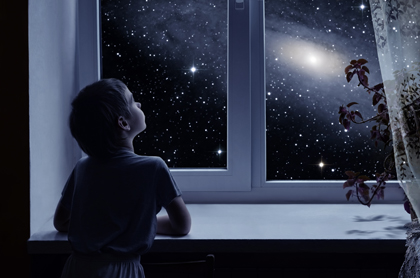Primary Times - the definitive what’s on and where to go family guide of activities and events for children of primary school age. Things to do with your kids during the school holidays including arts and craft activities, music and theatre for children, parties, competitions, days out, and family attractions along with term time drama schools, dance classes, after school clubs and sports activities. Things to do at a place near you!
Look to the Skies for These Eight Celestial Events This Autumn…
 Primary Times encourages you to cast your eyes upwards over the next few weeks as the heavens reveal some of their most interesting wonders…
Primary Times encourages you to cast your eyes upwards over the next few weeks as the heavens reveal some of their most interesting wonders…
10th September - Corn Moon, or the Harvest Moon. On this date, the Moon will be located on the opposite side of the Earth to the Sun, and its face will be fully illuminated! This full moon was known by early Native American tribes as the Corn Moon because corn is harvested around this time of year. That is why it’s also known as the Harvest Moon.
16th September - Neptune at Opposition. At this time, the blue giant planet will be at its closest approach to Earth and its face will be fully illuminated by the Sun. It will be brighter than any other time of the year, and visible throughout the night! It’s the best time for enthusiasts to view and photograph Neptune, but it’s not visible to the naked eye – you’ll need a telescope for this one!
23rd September - September Equinox. This marks the end of Summer and the official beginning of Autumn. The Sun will shine directly on the equator and there will be nearly equal amounts of day and night throughout the world.
25th September - New Moon. The Moon will be located on the same side of the Earth as the Sun and will not be visible in the night sky. Try and look for it - it won’t be there!
26th September - Jupiter at Opposition. Throughout this night, Jupiter will be fully illuminated by the sun and at its closest proximity to earth of any date in the year. With a good pair of binoculars, you should be able to see Jupiter's four largest moons, appearing as bright dots on either side of the planet.
7th October - Draconids Meteor Shower. The Draconids is a minor meteor shower producing only about 10 meteors per hour. It is produced by dust grains left behind by comet 21P Giacobini-Zinner, which was first discovered in 1900. The shower is active from the 6th of October to the 10th, and peaks this year on the night of the 7th. With a little patience, in the early evening you may be able to see a few good ones.
8th October - Mercury at Greatest Western Elongation. This is when the planet Mercury reaches greatest western elongation of 18 degrees from the Sun. It’s the best time to view Mercury, so make sure to look for the planet low in the eastern sky just before sunrise.
9th October - Travel Moon, or the Blood Moon. This full moon is also known as the Hunters Moon. It was named so by Anglo Saxons and Native American tribes, because at this time of year it’s considered hunting season – time to prepare for Winter!




